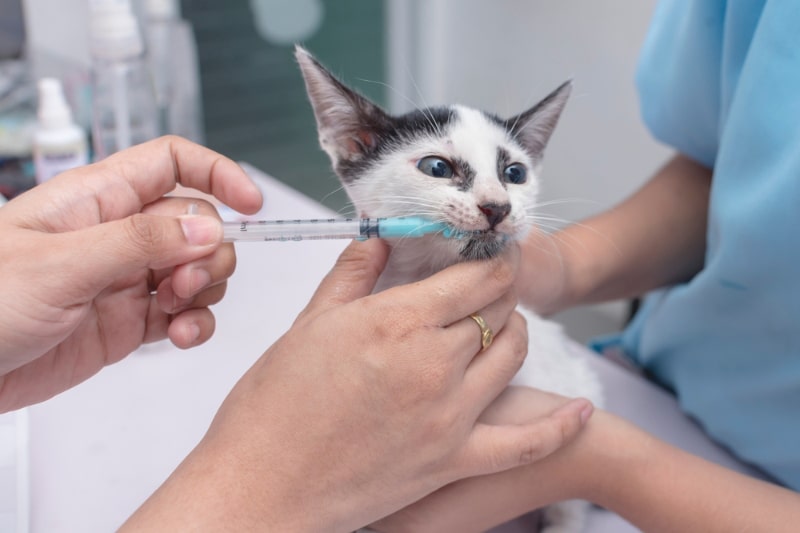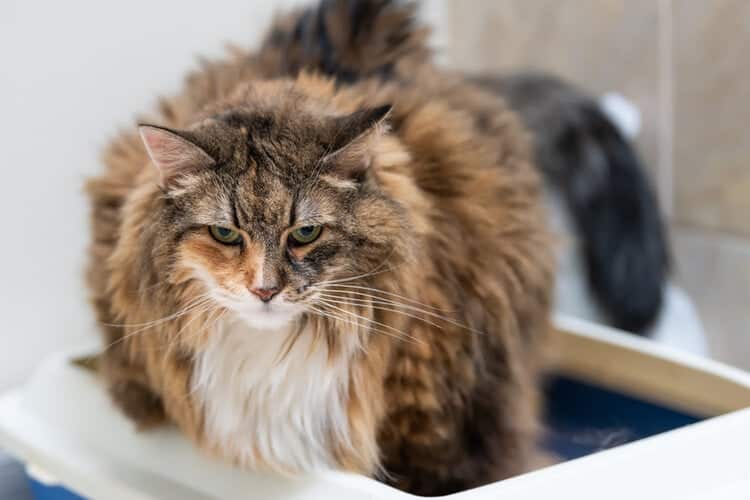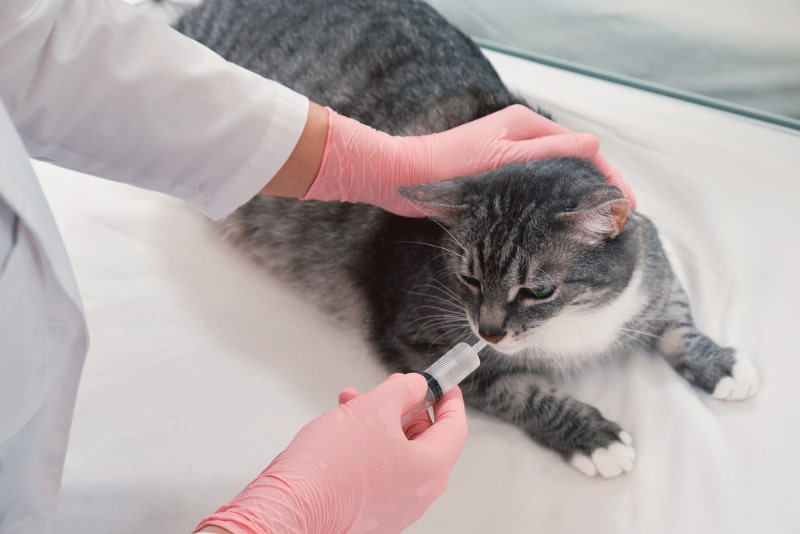You may notice your cat in the litter box, straining to defecate and being unable to. You may also notice that your cat is only passing small, firm “fecal balls”, vomiting, or just otherwise not acting like themselves. Constipation can occur for many reasons in cats, with various treatments available. A simple over the counter (OTC) treatment you can try is giving your cat Miralax. This can be effective for both simple cases of constipation, or long-term management. In this article we will discuss more about Miralax, how much to give, and if there are any side effects you should be aware of. Remember that it is important to consult a vet before giving any medication to your cat.
What Is Miralax?
Miralax is the brand name of an osmotic laxative that contains PEG 3350, or Polyethylene Glycol. Other names include GaviLAX, GlycoLax and ClearLax. It is used to help relieve constipation, or difficulty defecating normally and regularly, often due to firm stools.
What is an osmotic laxative? This means that when swallowed, it travels through the digestive tract (in the intestines), binding to water molecules along the way. This will then cause more fluid to be absorbed into the intestinal tract, increasing the size of the intestines and their water content. As the Miralax and additional water gets to the colon, the hope is that the increased hydration of the intestine will cause the hardened stool to soften, therefore making it easier to pass.
Miralax is not a stimulant laxative. A stimulant laxative is a medication that will cause increased contraction(s) of the intestinal tract. It is never recommended to give a stimulant laxative to your cat unless specifically prescribed by your veterinarian.
How Is Miralax Given?
Miralax comes in powder form. It is reported to be odorless and tasteless, though we cannot know for certain if cats and dogs may be able to smell and/or taste it. It does not need any special storage – only to be kept in the container it’s purchased in. Miralax does not need to be kept in the fridge once opened and can remain on your counter or medicine cabinet.
Miralax is taken orally; in other words, it’s eaten. While it does not need to be taken with food to be effective, it is going to be easiest to administer to your cat with food. You can either sprinkle it right on top of their food or mix it in to try and disguise it from suspicious eyes. Of course, you can try to mix it into liquid and give it to your cat with a syringe, but this will likely not end up going very well.
For mild constipation, it should be given twice daily until the stools have normalized and your cat is defecating normally. If your cat is severely constipated, they may need more aggressive care in the hospital first, and stools maintained with Miralax given once or twice a day.
Dosing Miralax and What Happens If You Miss a Dose
Always double check dosages with your veterinarian. It’s best to start between 1/8-1/4 teaspoon twice daily. Ask your veterinarian if they want you to give this medication to your cat either once or twice a day.
If you normally give it twice a day, then if you miss a dose, your veterinarian may have you double the dose and give it only once. However, it depends on the severity and cause of the constipation in your cat what your veterinarian may want you to do. Miralax is overall very safe. Missing a dose typically will not cause any adverse effects. If anything, missing a dose may cause your cat’s constipation to persist.
Sometimes cats are so severely constipated that they need to be sedated and have stool manually removed by your veterinarian. They are often then kept in the hospital to receive IV fluids and intensive care before going home on medical management. Miralax may be prescribed to your cat by your veterinarian for long term care. Therefore, dosing may be titrated up or down depending on how your cats do, and what is causing their constipation in the first place.

Potential Side Effects of Miralax
Overall, Miralax is safe for most cats. In some cases, however, it may not help your cat at all. If this is the case, your cat may start to vomit and/or continue to strain to defecate if you are only giving Miralax and not taking any other steps to help your cat.
Other cats may have increased flatulence or diarrhea if too much is given. If this occurs, you should back down on the dose to once daily and contact your veterinarian about further instructions.
If your cat is constipated from underlying dehydration, giving Miralax or any other osmotic laxative may worsen their dehydration. This is because of what we discussed above in that Miralax will draw more liquid into the intestinal tract. Make sure your cat is not only drinking appropriate amounts of water but is also not dehydrated. Your veterinarian can discuss this with you as some cats drinking excessively will still be chronically dehydrated. We see this commonly when cats have chronic kidney disease.
Frequently Asked Questions
How Long Will Miralax Take to Work?
In mild cases of constipation, you should notice results within about 12 hours. However, if your cat is severely constipated, it may take a few days. At minimum your cat should be passing small pieces of firm stool daily. If more than 2 or 3 days has gone by without any stool being passed, you should seek emergent veterinary care.

Why Is My Cat Constipated?
Constipation in cats can occur for a number of reasons. Sometimes it’s just from decreased water intake and/or their diet. Other times constipation can be from chronic kidney disease, hairballs, or previous injury. Your veterinarian will likely want to perform radiographs and bloodwork to try to determine what the cause of your cat’s constipation is, and discuss if this may be the beginning of a chronic issue.
Conclusion
Constipation can occur for a number of reasons in cats. In cases of mild constipation, your cat may be able to receive medical management at home, including Miralax. Miralax is an osmotic laxative that helps to soften stool by increasing the water content in the gut. It can be purchased OTC as a powder and sprinkled on top of or mixed into your cat’s food. It may be given once or twice daily, depending on your veterinarian’s recommendations. Dosing can be titrated up or down with few side effects seen. Management of constipation should always be done with your veterinarian, as prescription food and/or other medications may be needed for long-term control.
Featured Image Credit: Zhuravlev Andrey, Shutterstock











